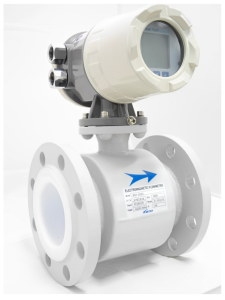Probably one of the most common sights in a wastewater treatment facility apart from tanks, valves, chemical pumps and pipes is the Electromagnetic Flow Meter more often known as a “Magmeter”.
It’s no surprise that a Magnetic Flow Meter will measure wastewater with ease. This is because it depends on the presence of minerals in the water to operate. Faraday’s Law works well in these conditions and even other liquids containing minerals e.g. cement flow. We could say that the Magmeter is already a trusted flow device and users can buy, install the meters without too much trouble, as long as the price does not defeat the purpose. For larger pipe sizes it is not uncommon for users to opt for alternative technologies such as the transit time flow meter or doppler.
What is the difference between Transit Time Flow Meters and Doppler Flow Meters?
The main difference is that Doppler Flow Meters depend on some amount of suspended solids or air bubbles to act as reflectors so that a frequency shift (Doppler effect) can be measured. See the video below.
Doppler Flow Meters also need a minimum velocity to work well. If the requirements are met for a Doppler Flow Meter, then we could say that the instrument is serving it’s purpose. New developments in Transit Time Flow Measurement make it possible for this technique also be used in wastewater flow applications although cross correlation flow meters will cost a bit more compared to simple phase shift Ultrasonic Flow Meters or Dopplers.














